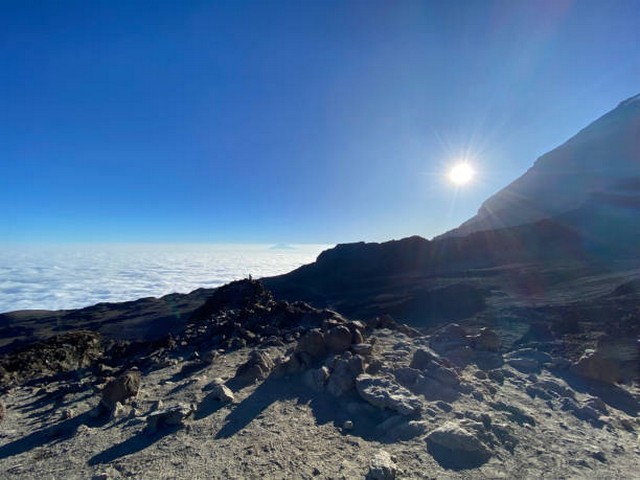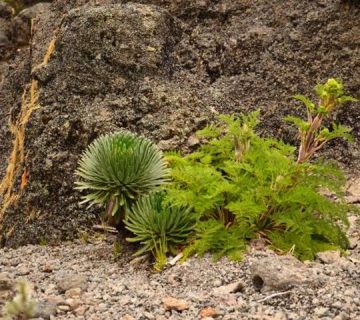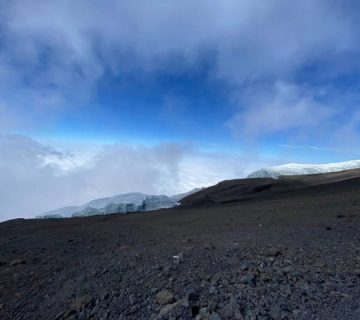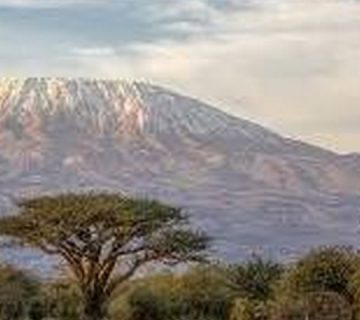Best Trekking Backpacks and Sleeping Bags for Kilimanjaro: Your Ultimate Guide
Ascend the Roof of Africa with the Right Gear!
Preparing for a trek to the majestic Mount Kilimanjaro, the highest peak in Africa, is an adventure of a lifetime. The success of this thrilling expedition often hinges on having the right equipment. At Kilimanjaro Centre for Trekking and Ecotourism (KCTE), we understand that the choices you make in gear can make or break your trekking experience. In this detailed guide, we’ll help you choose the best trekking backpacks and sleeping bags specifically suited for the unique challenges of Kilimanjaro.
Why Choosing the Right Backpack and Sleeping Bag Matters
When you’re over 5,895 meters above sea level, battling the elements and your own physical limits, every item you carry needs to be carefully considered. The right backpack can distribute weight evenly, reducing fatigue. A good sleeping bag, on the other hand, is your best defense against the cold nights near the summit. Lightweight, durable, and comfortable gear is key to ensuring you enjoy the trek, rather than just endure it.
Best Trekking Backpacks for Kilimanjaro
1. The Osprey Aether AG 70
Ideal for its Anti-Gravity suspension, the Osprey Aether AG 70 provides unmatched comfort and ventilation. Its capacity is perfect for the five to nine days required to conquer Kilimanjaro, and it comes with a detachable day lid that converts to a daypack for shorter excursions from base camps.
2. Deuter Aircontact Lite 65+10
With an adjustable back length and a comfortable hip belt, the Deuter Aircontact Lite is designed for long-distance endurance. Its streamlined design and robust construction make it a reliable companion for the varying terrain of Kilimanjaro.
3. The North Face Banchee 65
Known for its dynamic aluminum frame system that adjusts to the shape of your back, The North Face Banchee 65 offers excellent load balance and control, which is critically important on the uneven paths of Kilimanjaro.
Choosing the Right Sleeping Bag for Kilimanjaro
1. The Western Mountaineering Alpinlite Sleeping Bag
This lightweight, down sleeping bag is rated for temperatures as low as -12°C, making it a great choice for Kilimanjaro’s summit night. Its compressibility and warmth-to-weight ratio are unparalleled.
2. Marmot Trestles 15 Synthetic Sleeping Bag
For those who prefer synthetic over down, the Marmot Trestles 15 maintains insulation even when wet—an important feature in the damp conditions that can sometimes occur on the mountain.
3. REI Co-op Magma 15 Sleeping Bag
Balancing price and performance, the REI Co-op Magma 15 offers warmth, low weight, and a comfortable fit. It is another excellent down option, with water-resistant fabric and a tailored hood to keep drafts at bay.
Tips for Packing Your Backpack Effectively
- Balance the Load: Distribute weight evenly to avoid strain on any part of your body. Heavier items should be closer to your back and centered.
- Accessibility: Keep items that you will need during the day, like snacks, water, and your rain jacket, in easily accessible pockets.
- Use Compression Sacks: These can help to minimize the volume of your sleeping bag and clothes, leaving more room for other essentials.
Caring for Your Gear Post-Trek
After your Kilimanjaro adventure, ensure your gear’s longevity by cleaning and storing it properly. Backpacks should be emptied and brushed free of dust and mud, while sleeping bags ought to be aired out and stored uncompressed to maintain loft.
Why Book Your Climb with Kilimanjaro Centre for Trekking and Ecotourism (KCTE)?
Embarking on a journey to Kilimanjaro is not just about breathtaking views or reaching the summit; it’s about making everlasting memories, pushing your boundaries, and overcoming challenges. With KCTE, you benefit from experienced guides who ensure your safety and enjoyment every step of the way. We provide insights and support in preparing for the trek, including detailed guidance on picking the right gear.
Conclusion: Ready to Tackle Kilimanjaro?
Selecting the best trekking backpacks and sleeping bags for your Kilimanjaro climb doesn’t have to be a daunting task. With the right information and quality gear, you’re set for success. Remember, the journey to the top of Africa begins with preparation.
Feeling inspired to tackle Kilimanjaro? Contact us at Kilimanjaro Centre for Trekking and Ecotourism (KCTE). Let us help you make your dream of conquering Kilimanjaro a reality. Book your adventure today and step into the wild with confidence!
Frequently Asked Questions
Q: How cold does it get on Kilimanjaro?
A: Temperatures at the summit can drop to below -20°C at night, so preparing with a suitable sleeping bag is crucial.
Q: How much should my backpack weigh?
A: It’s recommended that your backpack does not exceed 15% of your body weight. For most people, this means a packed backpack should weigh between 15-20kg.
Q: Can I rent equipment instead of buying it?
A: Yes, KCTE offers high-quality rental equipment for those who prefer not to buy. We ensure all rental gear is top-notch and suitable for the demands of Kilimanjaro.
Q: What is the best time to climb Kilimanjaro?
A: The best times to climb Kilimanjaro are during the dry seasons: from late June to October and from late December to mid-March.
Ready to embark on this adventure with us? Visit KCTE’s Official Website to book your climb today and check out our other resources to prepare for your journey!




